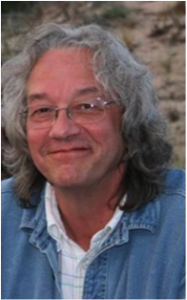Mark McCaslin

Mark McCaslin
The original idea I had held for this piece was to begin to engage our readers around the notion of sustainability. Many of you are aware of our ongoing conversations concerning how we sustain the current efforts being made to create the Integral Leadership Review. Before going further I, for one, celebrate the efforts of so many individuals who willingly work to create this very important publication. I also revel at the quality of work being contributed each issue by so many, from a array of disciplines and perspectives, all collectively adding to our understanding of Integral Leadership.
As the new editor, my earliest lesson has been one of deep realization, and now growing respect, for Russ Volckmann as well as the entire team of individuals dedicated to the production of this publication. First of all, let me declare there is no ongoing conversation concerning whether or not this effort will be continued. More to the point, conversations have been focused upon building our capacity in order to extend our reach coupled with discussions that have focused upon sustainability. I think an overarching question that might fairly capture our current purpose might be: How do we continue to serve as a platform for this emerging age of leadership and at the same time expand our readership as well as the quality of the publication? This has us considering issues of sustainability and capacity building.
Having written about the intersection of capacity building and sustainability, Figure 1, in the past it seemed important to reveal again the connection between these two related domains (McCaslin and Snow, 2010). What immediately becomes apparent is the direct connection between efficiency and effectiveness, needs and assets, products and processes, and the relationship between embracing innovation and creativity—the relationship between research and development with creative and critical thinking.

Figure 1: The Energy Balances of Eco-Leadership
While these relationships have framed our discussions they alone were not enough to move us towards our “sustainable” future. We had to fully move into the “Integral Space” where we valued where we have been and what we have learned together. This allowed us to interact in such a way that we began to see and empower the relationships currently at work within this Integral Space. This precipitated a move towards transacting innovations and advances towards our possible futures leading to an ongoing transformation of the Integral Leadership Review. Already you have likely seen changes in the way we engage with social media, the addition of video and audio presentations, and a more concerted effort to create a continual presence with this community of learning and practice. Other innovations are being discussed as we engage our sustainable future.
One such example is Russ Volckmann’s recent presentation on Generativity, Transdisciplinarity and Integral Leadership (http://integralleadershipreview.com/ilr_videos/generativity-transdisciplinarity-and-integral-leadership). This presentation serves not only as an example, it also begins to highlight the potential outflows from the Integral Space when we are able to inspire, innovate, and implement in such a way that capacity building and sustainability are held in balance. Generativity becomes enhanced when capacity building and sustainability are in equilibrium. Therefore, the processes and products emanating from the Integral Space are, in effect, an indicator of the generative potentials we collectively hold.
Our future depends upon our ability to remain generative. Generativity is about thriving as a community of learning and practice. Capacity building, to include what can be built through transdisciplinarity, plus the ethos of sustainability will yield generativity. “Generativity involves supporting the thriving of present and future generations” (Volckmann, 2013).
Welcome to our collective future!
In essence, generativity is the act of preparing another’s garden for spring. It’s power in the service of love. It’s an act of giving that enables another person to manifest his or her own strengths and gifts through love… Generativity protects our mental and physical health across an entire lifespan. When we nurture others, we nurture ourselves.
– Dr. George Valliant
